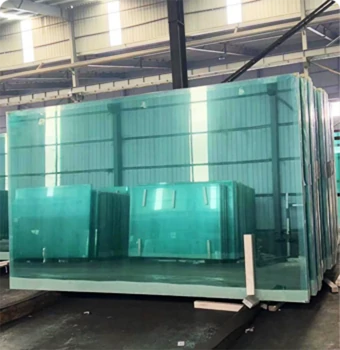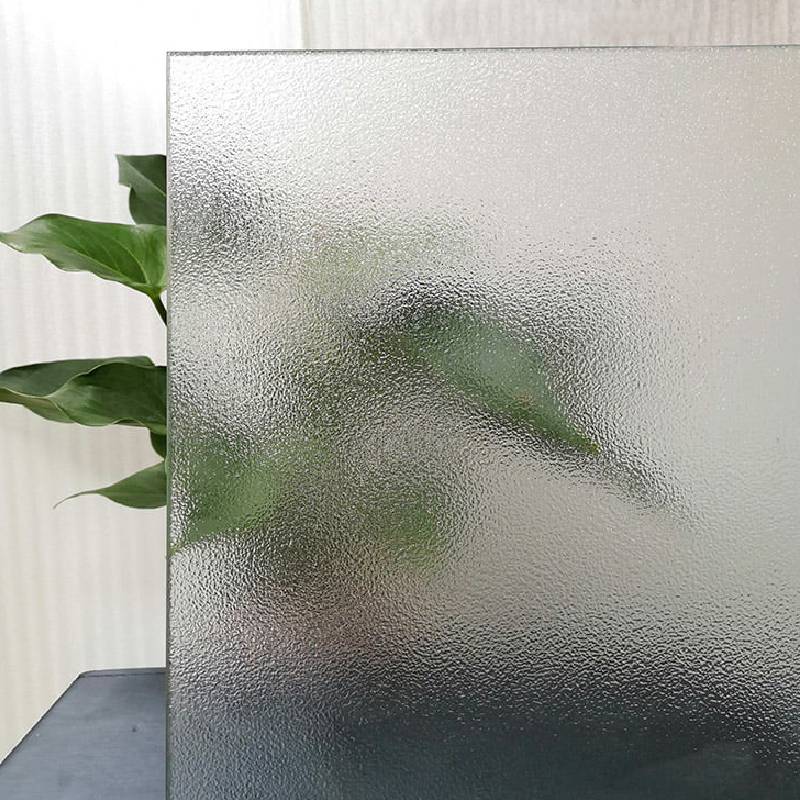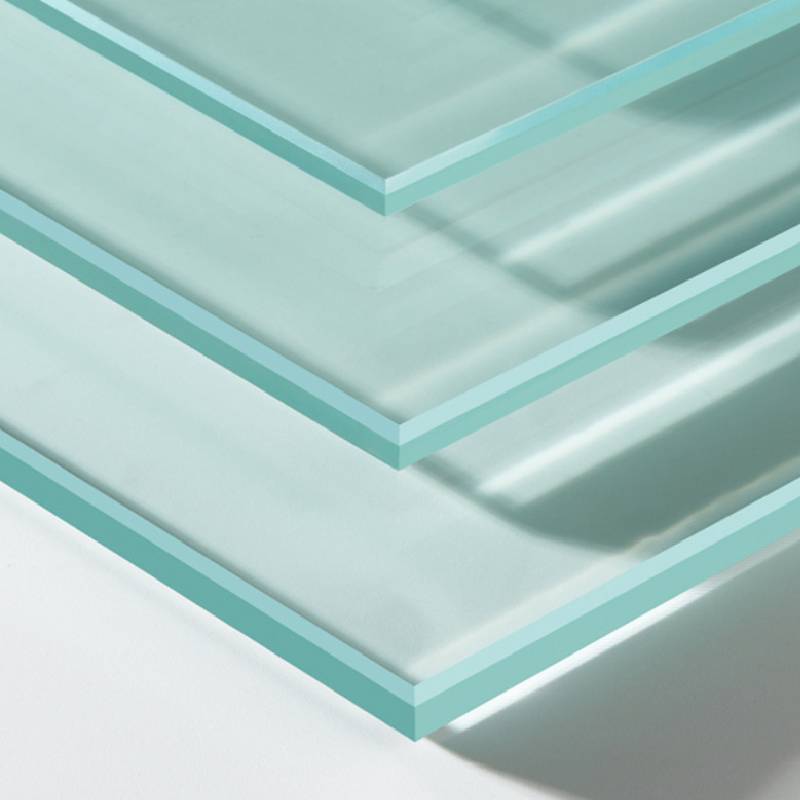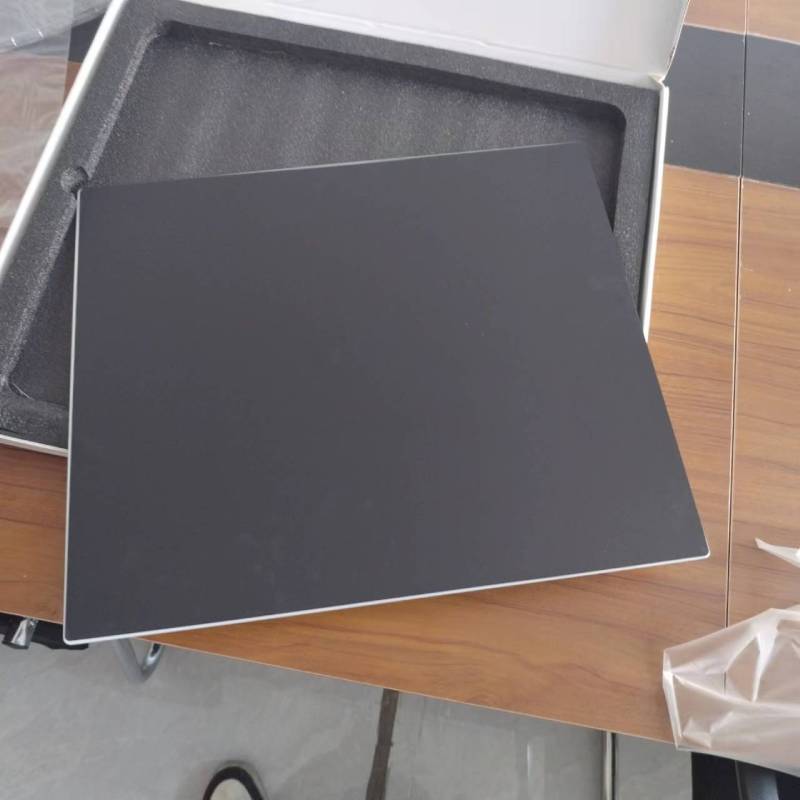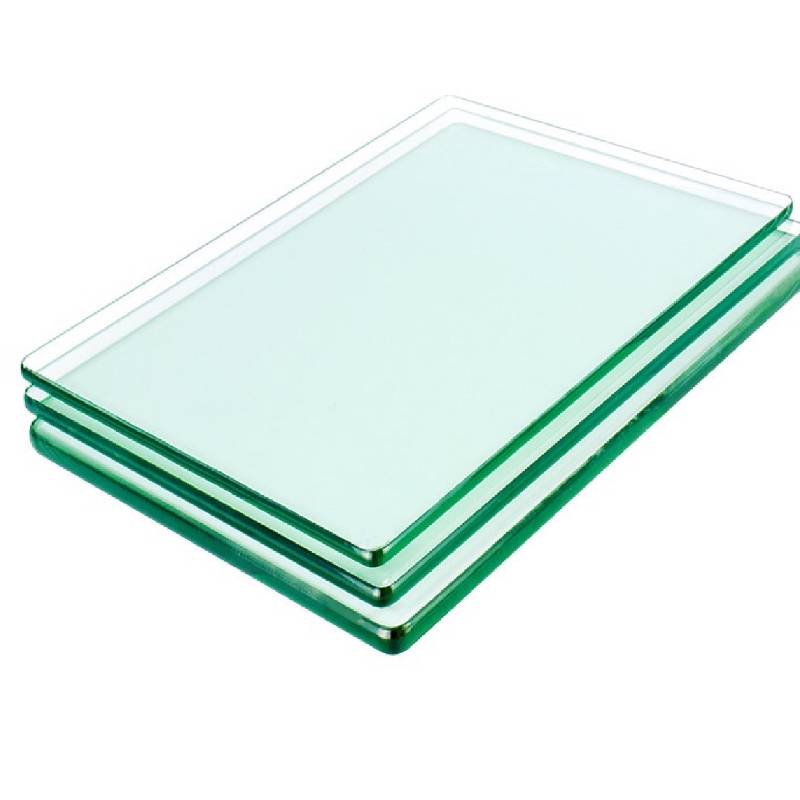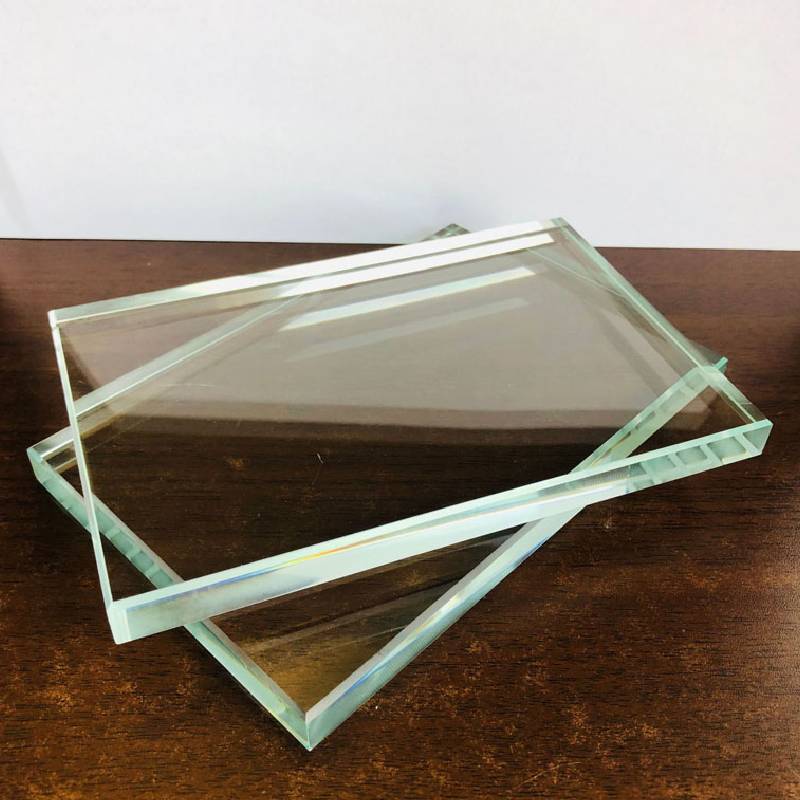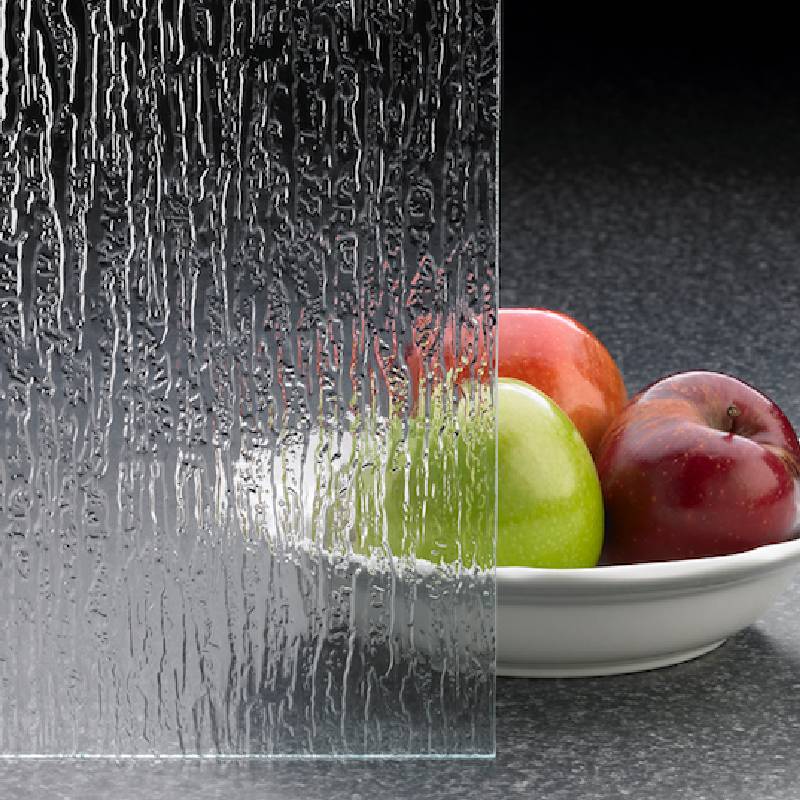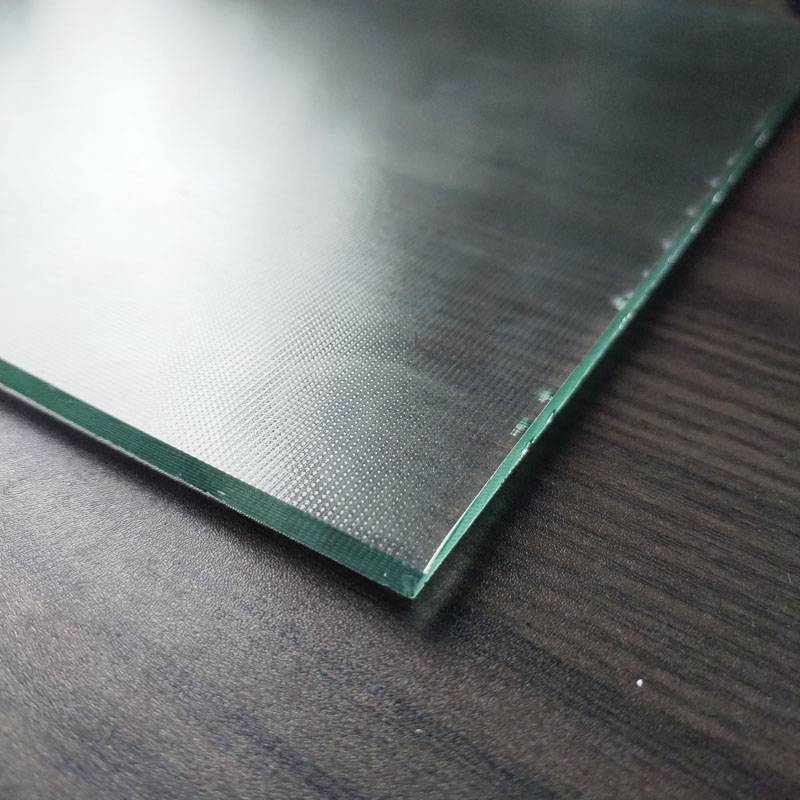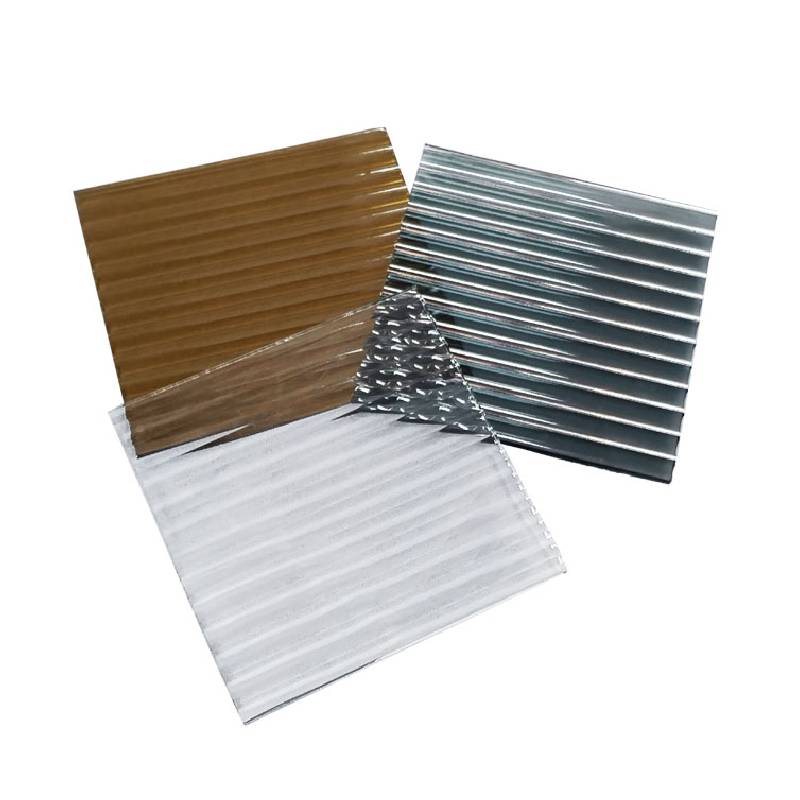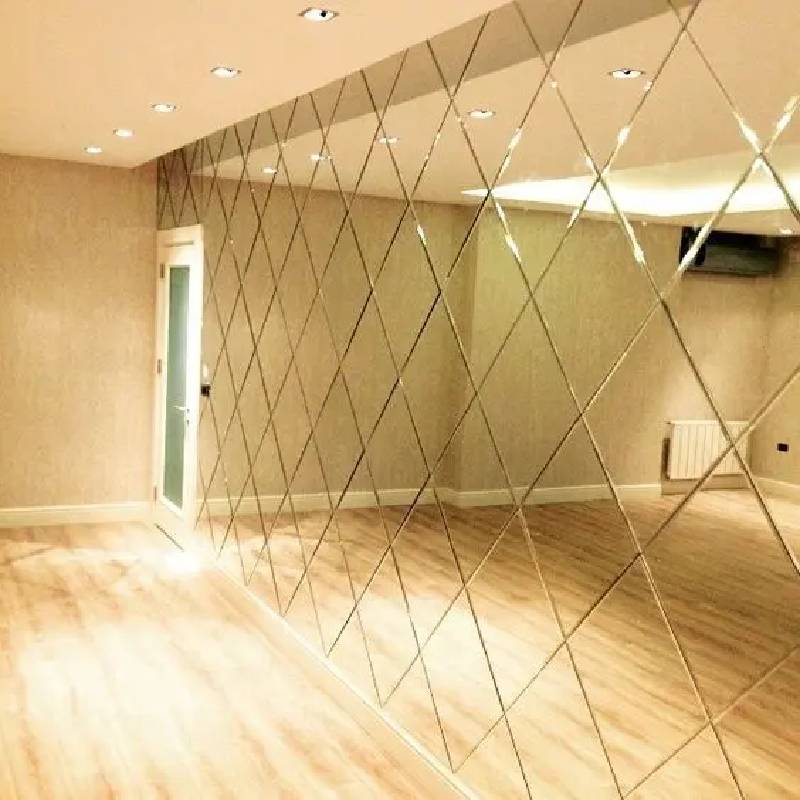Float glass means that the raw materials are melted at high temperature in the furnace. The molten glass continuously flows from the furnace and floats on the surface of the relatively dense tin liquid. Under the action of gravity and surface tension, the glass liquid spreads on the tin liquid surface. It is opened, flattened, and the upper and lower surfaces are formed to be smooth, hardened, and cooled before being led to the transition roller table. The rollers on the roller table rotate, pulling the glass ribbon out of the tin bath and into the annealing kiln. After annealing and cutting, flat glass products are obtained. The biggest feature of float glass is that its surface is hard, smooth, and flat. Especially when viewed from the side, the color is different from ordinary glass. It is white and the object is not distorted after reflection. In addition, due to the relatively good thickness uniformity, the transparency of its products is also relatively strong. It is precisely because of this transparency that it has a wider field of view. The broad field of view allows float glass to be used in many fields.
The production process of float glass is completed in a tin bath where protective gas (N2 and H2) is introduced. Molten glass continuously flows from the tank kiln and floats on the surface of the relatively dense tin liquid. Under the action of gravity and surface tension, the molten glass spreads and flattens on the tin liquid surface, forming an upper and lower surface that is smooth, hardened, and cooled. Then he was led to the transition roller table. The rollers on the roller table rotate, pulling the glass ribbon out of the tin bath and into the annealing kiln. After annealing and cutting, flat glass products are obtained. Compared with other forming methods, the advantages of float method are: it is suitable for high-efficiency manufacturing of high-quality flat glass, such as no corrugation, uniform thickness, smooth upper and lower surfaces, and parallel to each other; the scale of the production line is not limited by the forming method, and the energy per unit product Low consumption; high utilization rate of finished products; easy to scientifically manage and realize full-line mechanization and automation, high labor productivity; continuous operation cycle can last for several years, which is conducive to stable production; can provide suitable conditions for online production of some new varieties, such as Electric float reflective glass, spray film glass during annealing, cold end surface treatment, etc.
Float glass is widely used and is divided into tinted glass, float silver mirror, float white glass, etc. Among them, ultra-white float glass has a wide range of uses and broad market prospects. It is mainly used in the fields of high-end buildings, high-end glass processing and solar photovoltaic curtain walls, as well as high-end glass furniture, decorative glass, imitation crystal products, lighting glass, precision electronics industries, Special buildings, etc. Float glass has relatively good thickness uniformity and relatively strong transparency. Therefore, after tin surface treatment, it is relatively smooth. Under the action of smoothing, flame and polishing, it forms a surface that is relatively neat and flat. Glass with better strength and stronger optical properties. This kind of float glass has the characteristics of good transparency, brightness, purity, and bright indoor light. It is also the best choice for building doors, windows, and natural lighting materials. It is also one of the most widely used building materials. one.
The history of float glass can be traced back to the late 1950s. The British Pilkington Glass Company announced to the world that it had successfully developed the float forming process for flat glass. This was a revolution in the original grooved top forming process. However, the Western technology blockade at that time made China's float glass development and production have to take the path of self-reliance and independent innovation. In May 1971, the former Ministry of Building Materials Industry decided to conduct float process industrial trials in Luobo. Glass experts from all over the country gathered in Luobo, and more than a thousand employees of Luobo participated in the war. On September 23, 1971, under the guidance of department leaders and relevant experts, and with the full cooperation of fraternal units, the cadres and workers of Luoyang University worked together for more than three months and finally successfully built the first float. The glass production line produced my country's first float glass. From 1971 to 1981, CLFG implemented large-scale technical transformation on this line three times. The melting capacity of the production line reached 225 tons, the plate width exceeded 2 meters, and the overall yield reached 76.96%. At the end of 1978, In early 1979, thinner 4 mm glass was stably produced. The technology and equipment of "Luoyang Float Glass Process" were also improved day by day, and the technical level was continuously improved.
Преимущества флоат-стекла в основном отражаются в следующих аспектах: во-первых, оно имеет хорошую плоскостность и отсутствие водной ряби; во-вторых, выбранный рудный кварцевый песок имеет хорошее сырье; в-третьих, производимое стекло чистое и имеет хорошую прозрачность; наконец, структура Компактная, тяжелая, гладкая на ощупь, тяжелее плоской пластины на квадратный метр той же толщины, легко режется и нелегко ломается. Эти преимущества делают флоат-стекло широко используемым в строительстве, автомобилях, отделке, мебели, информационных технологиях и других отраслях.
- Толщина флоат-стекла
Обычная толщина 3 мм, 4 мм, 5,5 мм, 6 мм, 8 мм, 10 мм, 12 мм.
Ультратонкие 1,2 мм, 1,3 мм, 1,5 мм, 1,8 мм, 2 мм, 2,3 мм, 2,5 мм
Очень толстый 15 мм, 19 мм
Размер 1220*1830 мм, 915*2440 мм, 915*1220 мм, 1524*3300 мм, 2140*3300 мм, 2140*3660 мм, 2250*3300 мм, 2440*3660 мм
 Африканский
Африканский  албанский
албанский  амхарский
амхарский  арабский
арабский  Армянский
Армянский  азербайджанский
азербайджанский  Баскский
Баскский  белорусский
белорусский  Бенгальский
Бенгальский  Боснийский
Боснийский  болгарский
болгарский  каталанский
каталанский  кебуано
кебуано  корсиканец
корсиканец  хорватский
хорватский  Чешский
Чешский  датский
датский  Голландский
Голландский  Английский
Английский  эсперанто
эсперанто  эстонский
эстонский  финский
финский  Французский
Французский  фризский
фризский  галисийский
галисийский  грузинский
грузинский  Немецкий
Немецкий  греческий
греческий  Гуджарати
Гуджарати  гаитянский креольский
гаитянский креольский  хауса
хауса  гавайский
гавайский  иврит
иврит  Неа
Неа  Мяо
Мяо  Венгерский
Венгерский  исландский
исландский  игбо
игбо  индонезийский
индонезийский  ирландский
ирландский  итальянский
итальянский  Японский
Японский  яванский
яванский  Каннада
Каннада  казахский
казахский  кхмерский
кхмерский  Руандийский
Руандийский  Корейский
Корейский  курдский
курдский  киргизский
киргизский  туберкулез
туберкулез  латинский
латинский  Латышский
Латышский  Литовский
Литовский  Люксембургский
Люксембургский  македонский
македонский  Малгаши
Малгаши  малайский
малайский  малаялам
малаялам  мальтийский
мальтийский  маори
маори  Маратхи
Маратхи  Монгольский
Монгольский  Мьянма
Мьянма  непальский
непальский  Норвежский
Норвежский  Норвежский
Норвежский  окситанский
окситанский  пушту
пушту  персидский
персидский  Польский
Польский  португальский
португальский  панджаби
панджаби  румынский
румынский  Русский
Русский  Самоанец
Самоанец  Шотландский гэльский
Шотландский гэльский  сербский
сербский  Английский
Английский  Шона
Шона  Синдхи
Синдхи  сингальский
сингальский  словацкий
словацкий  словенский
словенский  Сомали
Сомали  испанский
испанский  суданский
суданский  суахили
суахили  Шведский
Шведский  Тагальский
Тагальский  таджикский
таджикский  тамильский
тамильский  татарский
татарский  телугу
телугу  тайский
тайский  турецкий
турецкий  туркменский
туркменский  украинец
украинец  Урду
Урду  уйгурский
уйгурский  Узбекский
Узбекский  вьетнамский
вьетнамский  валлийский
валлийский  Помощь
Помощь  идиш
идиш  Йоруба
Йоруба  Зулу
Зулу 

